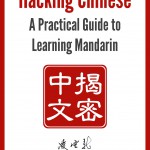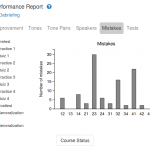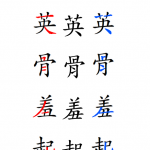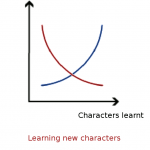Recent articles about how to learn Mandarin Page 34
-
Launching Hacking Chinese: A Practical Guide to Learning Mandarin
I’m proud to announce the launch of a new course: Hacking Chinese: A Practical Guide to Learning Mandarin. It’s the result of thousands of hours of work and just like the Hacking Chinese website, it is about how to learn Chinese in a better way. The course consists of video episodes, an in-depth e-book and an audio version. Get it before Christmas for a handsome discount!
Read → -
The Hacking Chinese free tone training course
Learning to hear the difference between tones is difficult for many learners. Research shows that speaker variability and a systematic and predictable approach are key to overcoming the problem. With this article, I launch a tone training course, which is meant to provide you with just that. For free!
Read → -
How to verify that you use the right Chinese font
For second language learners, using the wrong font can make learning characters very confusing. In this article, I will help you verify that you have the right fonts installed and discuss what happens if you don’t. This is a follow-up to an earlier article about Chinese fonts for students.
Read → -
One year of language challenges on Hacking Chinese
Hacking Chinese Challenges has now been online for more than a year and it’s time to take a step back to evaluate the service. Have you tried it out yet? What did you think? This article contains a short survey as well as some of my own reflections about the past and future of language challenges.
Read → -
Learning to pronounce Mandarin with Pinyin, Zhuyin and IPA: Part 3
As adults, understanding is important when learning pronunciation. One way to achieve this is through the International Phonetic Alphabet (IPA), which will allow you to see the sounds your ears might fail to hear. Learning IPA also means learning basic phonetics, and that will do you good in the long run!
Read → -
The real challenge with learning Chinese characters
The real challenge when learning Chinese characters is not to commit a large number of them to memory, it’s to relate them to each other, including how they are used, how they are different and how they are similar. Creating such an interconnected web is a lifelong project.
Read → -
Improving pronunciation beyond the basics
Learning pronunciation beyond the basics is about knowing where you want to be and where you are now. Then you identify which problems keep you from reaching your goal, and solve them one by one in order of importance. This starts with high-quality practice where you learn to pronounce something correctly, then moves to high-quantity practice where you gradually decrease the effort needed to get it right. After a while, no effort will be required and you will have successfully improved your pronunciation!
Read → -
Which words you should learn and where to find them
When learning a language, it’s important to know many words, but it’s also important that you learn the right words. How do you know which words to learn? Where should you find those words? And how much can you express using the ten hundred most common words?
Read → -
Can native speakers be wrong about Chinese grammar and pronunciation?
What does it mean when something is said to be “correct” in Chinese? Who’s right if all the people around you say something, but the dictionary says something else? Mandarin is a huge language spoken my a very large number of people, so some variation is to be expected. This article is about the flexibility of Mandarin and how to deal with it as a student.
Read → -
Learning Chinese characters through pictures
This article is about using pictures to learn Chinese characters. In order to learn characters efficiently, it’s important to understand how they work and what the building blocks are so that these can be used in other characters. Any pictures you use to remember should be based on this. Avoid using pictures that obscure the real meaning.
Read →









